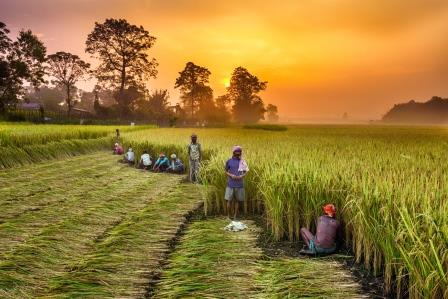 Indian economy is passing through a critical phase, with the GDP growth rate for the first quarter of FY20 slipping to 5 percent. The growth rate at 5 percent is one of the lowest rates in the last 25 quarters. One of the major components of GDP is consumption, with a share of around 60 percent in the total GDP. Thus, a slowdown in consumption will be reflected in the overall GDP of the country. For instance, Private Final Consumption Expenditure (PFCE) has declined from 7.31 percent in Q1 FY19 to 3.14 percent in Q1 FY20.
Indian economy is passing through a critical phase, with the GDP growth rate for the first quarter of FY20 slipping to 5 percent. The growth rate at 5 percent is one of the lowest rates in the last 25 quarters. One of the major components of GDP is consumption, with a share of around 60 percent in the total GDP. Thus, a slowdown in consumption will be reflected in the overall GDP of the country. For instance, Private Final Consumption Expenditure (PFCE) has declined from 7.31 percent in Q1 FY19 to 3.14 percent in Q1 FY20.
The major influencing factor to consumption is income. However, it could be seen that the economy is experiencing a declining wage growth, both in rural and urban areas. Rural wage growth has declined from 27.7 per cent in FY14 to less than 5 per cent in FY19. The health of the rural economy is important, as 70 percent of the workforce resides in rural areas.
Agriculture is the major sector of rural economy and rural employment. Rural distress in the economy is evident from the low inflation experienced in the economy. For instance, food and beverages has a share of 45.86 percent in the total basket of goods and services used in the construction of Consumer Price Index (CPI). It shows that the movement of food prices greatly determine the general trend in the overall inflation. Low food prices translate to low rural income.
The issues in the agricultural sector have been a point of discussion for a very long time. Government aims to double farmer’s income by 2022. Yet, this seems to be a difficult task. According to Ashok Gulati, eminent Agricultural Economist, doubling farmer’s income by 2022 would require the farmer’s income to increase between 13 percent and 15 percent every year. The number seems to be very ambitious, but urgent reforms in the agricultural sector can make it happen, even if not in 2022.
Our experience shows that hiking Minimum Support Price (MSP) won’t solve the issues in the agricultural sector. There needs an overhaul in the whole system that will ensure that the farmers get remunerative market-determined prices for their products. If the farmers are able to sell their produce at remunerative prices, it will be a boost to the rural economy.
Other factors are working positive for the rural economy. India is expected to clock a surplus rainfall this year, giving a positive outlook to the agriculture sector. Similarly, to address the liquidity crisis, various steps are initiated by the government as well as by the Central Bank. It is also expected that the government’s decision to slash corporate tax rate might bring down consumer prices that could spur demand. With the other factors falling into place, now it is time to address the core issue in the rural economy. A healthy rural economy could spur demand beneficial to other sectors.
Posted on 27 September 2019









